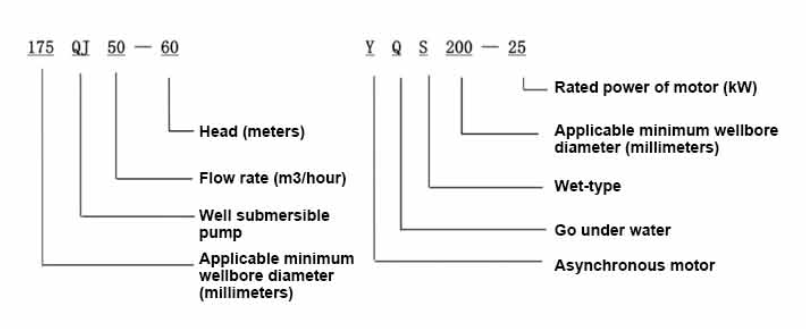Dec . 12, 2024 01:58 Back to list
installing a submersible pump in a deep water well
Installing a Submersible Pump in a Deep Water Well
Installing a submersible pump in a deep water well can be a daunting task, but with proper planning and execution, it can be accomplished effectively. Submersible pumps are designed to operate underwater, making them ideal for pulling water from deep wells where surface pumps would be inefficient. This article aims to provide a step-by-step guide on how to install a submersible pump in a deep water well.
Step 1 Gather Necessary Tools and Materials
Before beginning the installation process, it's crucial to gather all the necessary tools and materials. This includes
- Submersible pump - Pump cable (specific to your pump and well depth) - Well casing adapter - Discharge pipe - Sump or threaded pipe fittings - Pipe wrenches - A cable cutter - A wire crimper - PVC glue and connectors - Safety gear (gloves, goggles)
Step 2 Determine the Well Depth
The first step in installation is determining the depth of your well and the specific dimensions needed for the pump. Many submersible pumps come with a maximum depth rating, so it’s important to select a pump that is suitable for your well’s depth. Additionally, consider the static water level and the pump's ability to handle the required flow rate.
Step 3 Preparing the Pump
After selecting the appropriate pump, the next step is to prepare it for installation. Make sure you check all components to ensure that they are in good working condition. Attach the discharge pipe to the pump's outlet using the appropriate fittings. This is typically done with PVC glue or threaded fittings.
Step 4 Electrical Wiring
installing a submersible pump in a deep water well

Proper electrical wiring is crucial for a successful installation. There are safety regulations that must be followed, especially when dealing with water. Measure and cut the pump cable to the desired length, ensuring that it will reach the power source above ground. Strip the ends of the wires and connect them to the pump, using a wire crimper to secure the connections. Make sure to follow the manufacturer's wiring schematic closely.
Step 5 Lowering the Pump into the Well
With the pump prepared and wired, it's time to lower it into the well. This process requires a bit of caution. Using a strong, non-stretchable rope or cable, securely attach it to the pump handle or lifting bail. Lower the pump slowly and steadily to avoid damaging the wiring or the pump itself. Pay attention to the water level as you descend to ensure you don’t lower it past the static water level.
Step 6 Finalizing Connections
Once the pump is fully submerged and positioned at the correct depth, it’s time to finalize connections. Check for leaks in the discharge piping connections, and ensure everything is fastened securely. Use pipe wrenches to tighten any fittings, but be careful not to overtighten and damage plastic fittings.
Step 7 Test the Pump
Before sealing up the well, it’s critical to test the pump to ensure it’s functioning properly. Make sure the electrical connections are secure and turn on the power. Observe the water flow to confirm that the pump is delivering water at the expected rate and pressure. If issues arise, troubleshoot the connections and ensure there are no kinks in the piping.
Conclusion
Installing a submersible pump in a deep water well requires careful planning and precise execution. By following these steps and adhering to safety protocols, you can ensure a successful installation that will provide reliable water supply for years to come. If you're ever unsure, don't hesitate to consult with a professional to assist with the installation.
-
Submersible Water Pump: The Efficient 'Power Pioneer' of the Underwater World
NewsJul.01,2025
-
Submersible Pond Pump: The Hidden Guardian of Water Landscape Ecology
NewsJul.01,2025
-
Stainless Well Pump: A Reliable and Durable Pumping Main Force
NewsJul.01,2025
-
Stainless Steel Submersible Pump: An Efficient and Versatile Tool for Underwater Operations
NewsJul.01,2025
-
Deep Well Submersible Pump: An Efficient 'Sucker' of Groundwater Sources
NewsJul.01,2025
-
Deep Water Well Pump: An Efficient 'Sucker' of Groundwater Sources
NewsJul.01,2025
-
 Submersible Water Pump: The Efficient 'Power Pioneer' of the Underwater WorldIn the field of hydraulic equipment, the Submersible Water Pump has become the core equipment for underwater operations and water resource transportation due to its unique design and excellent performance.Detail
Submersible Water Pump: The Efficient 'Power Pioneer' of the Underwater WorldIn the field of hydraulic equipment, the Submersible Water Pump has become the core equipment for underwater operations and water resource transportation due to its unique design and excellent performance.Detail -
 Submersible Pond Pump: The Hidden Guardian of Water Landscape EcologyIn courtyard landscapes, ecological ponds, and even small-scale water conservancy projects, there is a silent yet indispensable equipment - the Submersible Pond Pump.Detail
Submersible Pond Pump: The Hidden Guardian of Water Landscape EcologyIn courtyard landscapes, ecological ponds, and even small-scale water conservancy projects, there is a silent yet indispensable equipment - the Submersible Pond Pump.Detail -
 Stainless Well Pump: A Reliable and Durable Pumping Main ForceIn the field of water resource transportation, Stainless Well Pump has become the core equipment for various pumping scenarios with its excellent performance and reliable quality.Detail
Stainless Well Pump: A Reliable and Durable Pumping Main ForceIn the field of water resource transportation, Stainless Well Pump has become the core equipment for various pumping scenarios with its excellent performance and reliable quality.Detail
